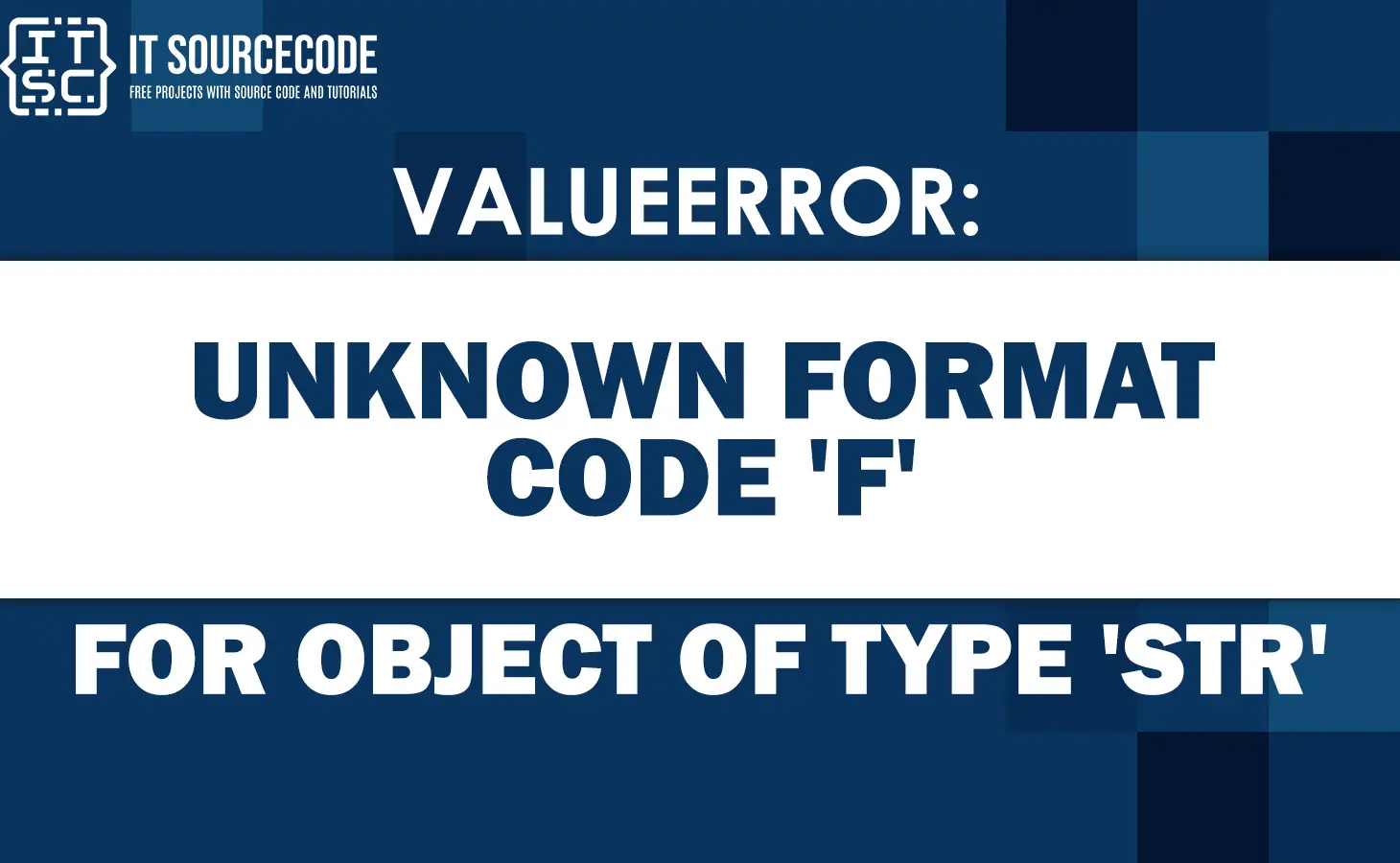The error message ValueError: unknown format code ‘f’ for object of type ‘str’ typically occurs when trying to use a string formatting code which is not compatible with the data type of the object.
In this article, we will explain this error in detail, provide examples to illustrate its occurrence, and present solutions to resolve it.
Understanding the ValueError and its Causes
The ValueError is a built-in exception in Python that shows an incorrect argument value.
In the case of the error message “Unknown format code ‘f’ for object of type ‘str’“, it specifically refers to an unrecognized format code used in string formatting.
The % operator in Python is commonly used for string formatting, allowing us to substitute values into a string.
However, if we use an unrecognized format code, such as ‘f’ for a string object, the ValueError is raised.
How to Reproduce the Error?
Here is an example of how to the error will occur:
For Example:
name = "Alice"
print("Hello, %f!" % name)
In this example, we mistakenly use the format code ‘f’ instead of ‘%s’ to represent a string.
If we run the example code above, we encounter the following error:
ValueError: Unknown format code ‘f’ for object of type ‘str’
Let’s take a look at the another example:
Another cases where the ValueError: Unknown Format Code ‘f’ for Object of Type ‘str’ can occur is when combining multiple format codes within a single string formatting operation.
For example:
name = "Bob"
age = 30
print("Name: %s, Age: %f" % (name, age))In this example, we expect to print both the name and age using string formatting. However, we incorrectly use the format code ‘f’ for the age, which results to the ValueError when executing the code.
How to Solved the Error Unknown Format Code ‘f’ for Object of Type ‘str’?
The following are the solutions to solve the valueerror: unknown format code ‘f’ for object of type ‘str’.
Solution 1: Use the Correct Format Code
To resolve the ValueError and successfully format the string, we need to use the correct format code. In this case, we should use ‘%s’ to show a string.
Here’s the example code:
person = "John"
print("Hello, %s!" % person )By replacing the incorrect format code ‘f’ with ‘%s’, the code will execute without any errors, resulting in the expected output:
Hello, John!
Solution 2: Use the Appropriate Format Codes for Each Variable
To fix the ValueError, we need to use the appropriate format codes for each variable within the string formatting operation.
In this case, we should use ‘%s’ for the name and ‘%d’ for the age (assuming it’s an integer).
For example:
name = "Jason"
age = 30
print("My name is %s, and I am %d years old." % (name, age))By using the correct format codes ‘%s’ and ‘%d’ for the name and age, respectively, the code will execute without any errors, producing the output:
My name is Jason, and I am 30 years old.
Solution 3: Check Syntax Formatting
Double-check the syntax of your formatting operation. Make sure that all parentheses are correctly closed and that there are no syntax errors in your code. A simple typos or missing characters can cause the error to occur.
Additional Resources
- Runtimeerror: context has already been set
- runtimeerror broken toolchain cannot link a simple c program
- Runtimeerror: mat1 and mat2 shapes cannot be multiplied
- Runtimeerror: cudnn error: cudnn_status_internal_error
Conclusion
The ValueError: Unknown Format Code ‘f’ for Object of Type ‘str’ typically occurs when we attempt to format a string using an unrecognized format code.
In this article, we provide examples that demonstrate the occurrence of this error and provided solutions to resolve it.
By using the correct format codes and understanding the principles of string formatting in Python, you can avoid these errors and ensure smooth execution of your programs.
FAQs
The ValueError shows that an unrecognized format code ‘f’ was used for a string object in Python’s string formatting operation. It signifies a mismatch between the expected and actual format codes.
The ValueError occurs because the format code ‘f’ is not valid for a string object. The % operator expects appropriate format codes based on the type of object being formatted.
Yes, Python provides a several format codes for different types of objects, such as ‘%d’ for integers, ‘%f’ for floating-point numbers, ‘%s’ for strings, etc.

